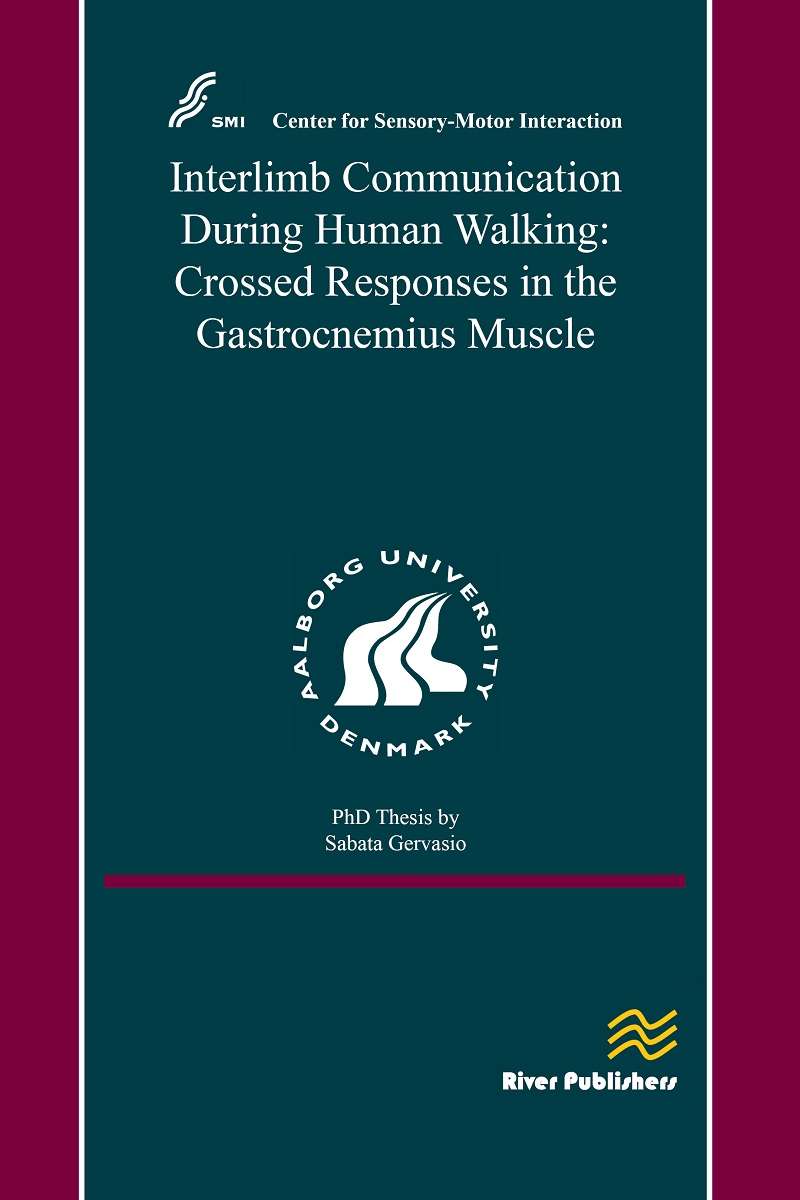River Publishers Series in open
Interlimb Communication During Human Walking: Crossed Responses in the Gastrocnemius Muscle
Author: Sabata Gervasio, Center for Sensory-Motor Interaction, Department of Health Science and Technology, Aalborg University, Denmark
ISBN: 9788793237346 (Hardback) e-ISBN: 9788793237353
Available: December 2014
The work presented in this PhD thesis is the result of research carried out at the Center for
Sensory-Motor interaction (SMI) at Aalborg University (Denmark), in the period from October 2010 to January 2014. The research was supported by Det Obelske Familiefond, Oticon Fonden, Otto Mønsteds Fond and Familien Hede Nielsens Fond.
This thesis investigates spinal pathways that might underlie interlimb coordination in healthy humans. The aim of this thesis was to provide insight to the neural pathway mediating short-latency crossed responses (SLCR) in the gastrocnemius muscle, investigating the possibility of a cortical contribution to this response and how contralateral sensory information is integrated to generate the response. Moreover this thesis aimed at providing evidence supporting its functionality. In order to fulfill these aims electrophysiological experiments, advanced mathematical modeling and movement analysis techniques were applied to elucidate the pathways mediating the crossed responses and their functionality.
This thesis contains five chapters. The Introduction presents the reader to the background and motivation for this project and gives a general overview of the PhD thesis. The Methods chapter introduces the adopted methods and elaborates the background for choosing these. The Results chapter presents the main findings in this thesis; the reported findings are further elaborated in the original papers. The Discussion chapter aims at interpreting significance and implications of these findings. Finally, the Conclusions chapter sums up the main findings and future perspective of this work.
The thesis is based on four original studies that produced four peer-reviewed journal papers and a peer-reviewed conference paper. In addition, several conference abstracts were based on the research conducted in this project.
This thesis investigates spinal pathways that might underlie interlimb coordination in healthy humans. The aim of this thesis was to provide insight to the neural pathway mediating short-latency crossed responses (SLCR) in the gastrocnemius muscle, investigating the possibility of a cortical contribution to this response and how contralateral sensory information is integrated to generate the response. Moreover this thesis aimed at providing evidence supporting its functionality. In order to fulfill these aims electrophysiological experiments, advanced mathematical modeling and movement analysis techniques were applied to elucidate the pathways mediating the crossed responses and their functionality.
This thesis contains five chapters. The Introduction presents the reader to the background and motivation for this project and gives a general overview of the PhD thesis. The Methods chapter introduces the adopted methods and elaborates the background for choosing these. The Results chapter presents the main findings in this thesis; the reported findings are further elaborated in the original papers. The Discussion chapter aims at interpreting significance and implications of these findings. Finally, the Conclusions chapter sums up the main findings and future perspective of this work.
The thesis is based on four original studies that produced four peer-reviewed journal papers and a peer-reviewed conference paper. In addition, several conference abstracts were based on the research conducted in this project.
short-latency crossed responses (SLCR)
